--------------------------------------------
i n v e s t i g a t o r s :
Keith Evan Green
Architecture/ECE, PI
Ian D. Walker
Electrical & Computer Eng., Co-PI
Elise Lewis
Library & Info Sc, USC, Co-PI
--------------------------------------------
p a r t n e r s :
Orangeburg County Library
Orangeburg, South Carolina

We are targeting Orangeburg Young Adults (above, in the library) who were identified as most at-risk in our needs analysis.
-------------------------------------------
a d v i s o r y b o a r d:
Anna Zachrel
Jessica Nuckolls,
Eddie Massey, and
Debra Allen
--------------------------------------------
f u n d i n g :
(NSF pending)
--------------------------------------------
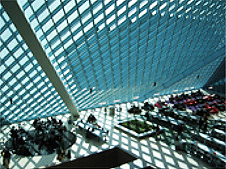 This is Seattle's $165M library. This is Seattle's $165M library.
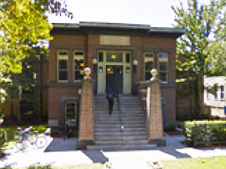 This is one of 1,689 libraries Andrew Carnegie built to dignify "anyplace, USA." This is one of 1,689 libraries Andrew Carnegie built to dignify "anyplace, USA."
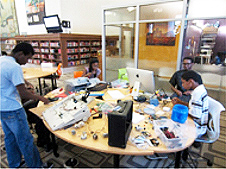 A typical library maker space. A typical library maker space.
• Does this dignify library users who aspire for something better?
• When resources are scarce, and so are Andrew Carnegies, what can designers, engineers and library & information scientists do to prepare users for global citizenry??
|
 |

LIBRARY CUBED is a cyber-physical library module for communities having inadequate or no library access.
The problem. Faced with pervasive literacy issues, a changing library mandate, decreased library building resources, and woefully inadequate library facilities, our research team seeks a novel compatibility between Carnegie’s vision of the library-as-community-anchor, and the necessity for digital literacy through free access to an expanded palate of digital tools.
Our question. What can cyber-human systems do to meet the library needs of underserved communities in a holistic, low-cost way, providing information, technology, inspiration, and the seeds for aspiration?
Our response. A physically reconfigurable, low-cost library environment of roughly 10-feet cubed, installed within the interior of an existing library branch (or, some other public building when there is no library). In addition to realizing this user-friendly, technology-rich prototype, our team will investigate how a spectrum of likely patrons (teens and seniors—targets as defined by our early needs analysis) employ this compact module in combination with the library building interior and its resources to interpret and construct meaning. In our interactions studies, we seek to better understand the potential of, and the relationship between, the total environment, its component tools, librarians, and users. As “Aspiration has many dimensions” (Herbert Simon), we are interested in how this room-scaled, cyber-physical tool cultivates and employ wide-ranging skill sets that are most vital to 21st century human activity, described as informational (accessing, evaluating and presenting information at multiple levels of abstraction), investigatory (solving problems that are both functional and imaginative); and innovative (creatively combining ideas and artifacts).
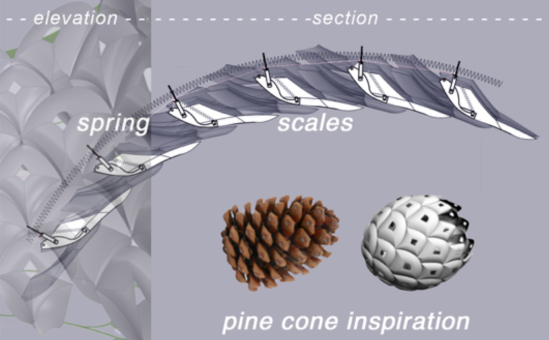 Our design strategy for the LIBRARY CUBED canopy. Our design strategy for the LIBRARY CUBED canopy.
Our paper on this early design strategy:
Wang, Yixiao and Green, Keith Evan. “Compressed-Pattern Robotic Architecture [CoPRA]: A Research Though Design Exemplar for Intelligent Architectural Settings of the Information Age.” Submitted to the 104th Annual Meeting of the Association of Collegiate Schools of Architecture (ACSA 2016), Seattle, Washington, March 17-19, 2016.
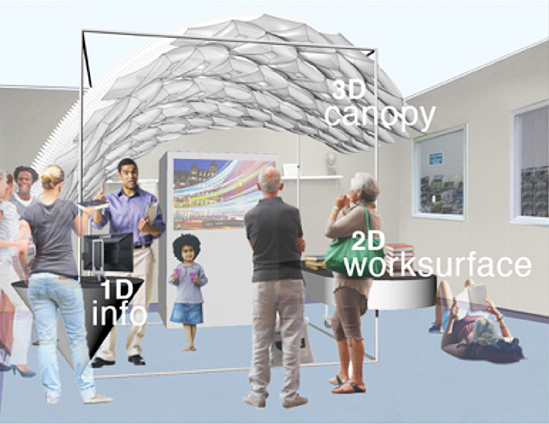
Our early conceptualization of LIBRARY CUBED, shown here after hours.
|
 |